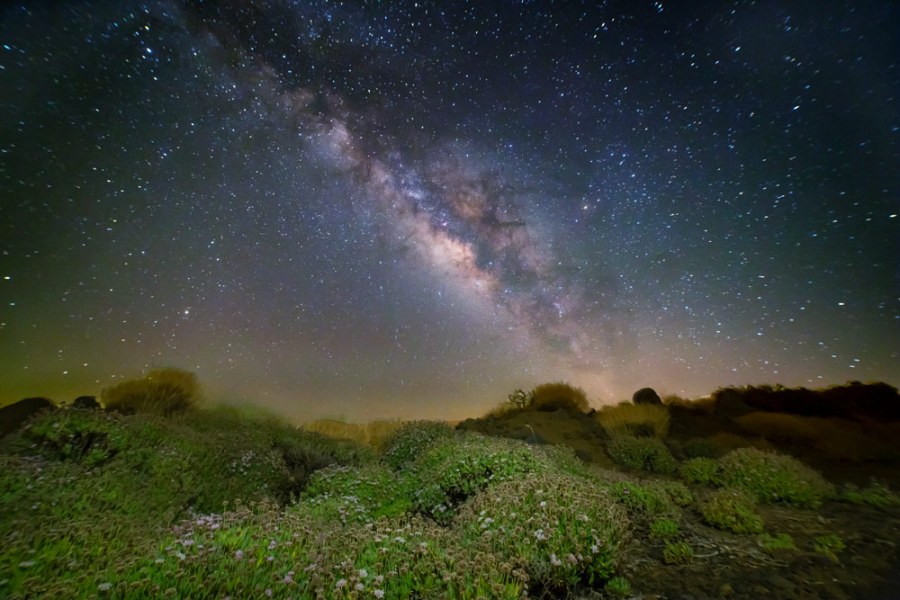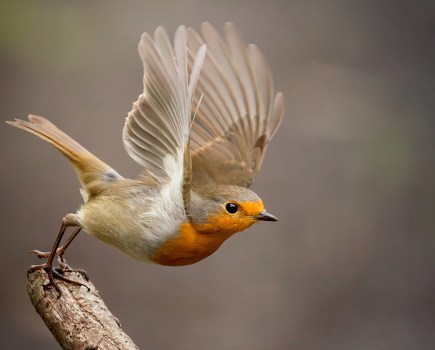Advertising feature
Night and astrophotography are some of the fastest-growing photography genres, driven by the ever-improving low light performance of cameras, as well as the increasing affordability of specialist gear.
A bigger challenge is finding skies that are dark enough. Light pollution is the curse of the modern age, and it’s a particular problem here in the UK.
So why not consider going abroad? The good news is that you don’t need to head too far to experience some of the best dark skies in the world – the beautiful island of Tenerife, off the North African coast, is a great example.
Away from the big resorts and towns, there is minimal light pollution affecting this rugged and picturesque island, and Tenerife’s dark skies are even protected by law.

The unique Tenerife landscape provides wonderful foreground interest. Credit: Peter Louer
Dark Skies Tenerife Guide is the premier astrophotography course provider in Tenerife, and we met up with general manager Steve Phelps and principal tutor Peter Louer to find out what’s on offer.
‘We started around seven years ago when I met Peter Louer, and started the Tenerife Astronomy Society,’ Steve explains. ‘At first we just offered doing star-gazing excursions around the island, and started to offer bespoke astrophotography courses just before the pandemic, at the beginning of 2020.
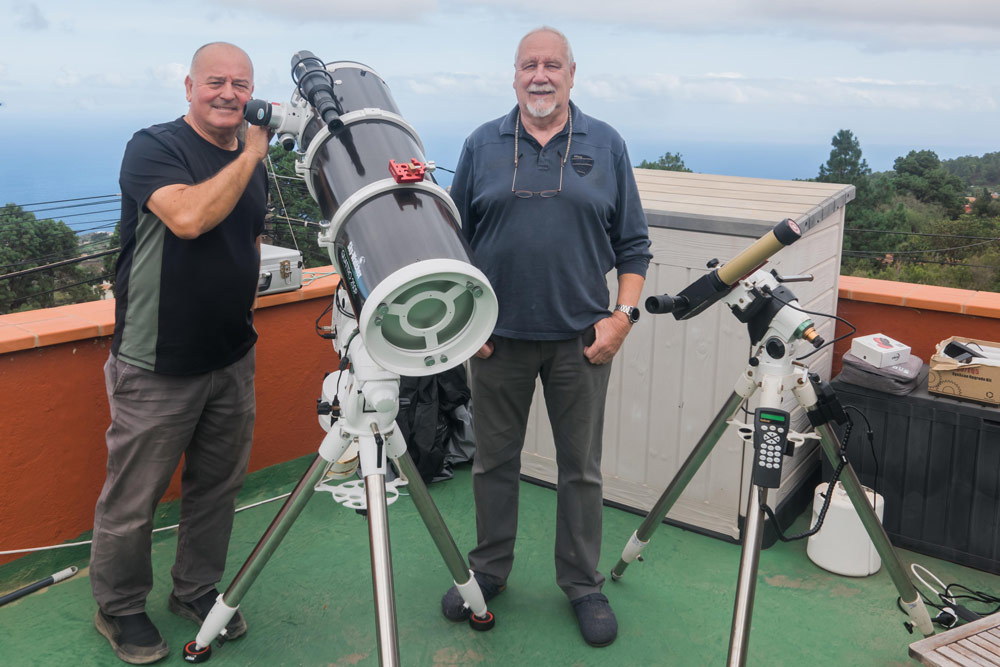
Steve Phelps (left) and Peter Louer (right) with some of their telescopes
We restarted the courses last February, and brought onboard another photography tutor called Danny Ardezoni.’
Dark Skies Tenerife Guide can offer everything from one day courses to more ambitious five-night trips, so it’s entirely bespoke. ‘We try to cover everything, depending on the customer’s experience, including processing and editing images – a very important part of astrophotography.’

Watching the Milky Way from Tenerife – it looks stunning in the autumn. Credit: Peter Louer
Enjoy the island with a motorhome
Accommodation is provided as part of the trips, but Dark Skies Tenerife Guide is now offering the chance to stay in a luxury motorhome. As Steve explains, ‘the idea for a motorhome came about as it can get cold on the island in the winter.
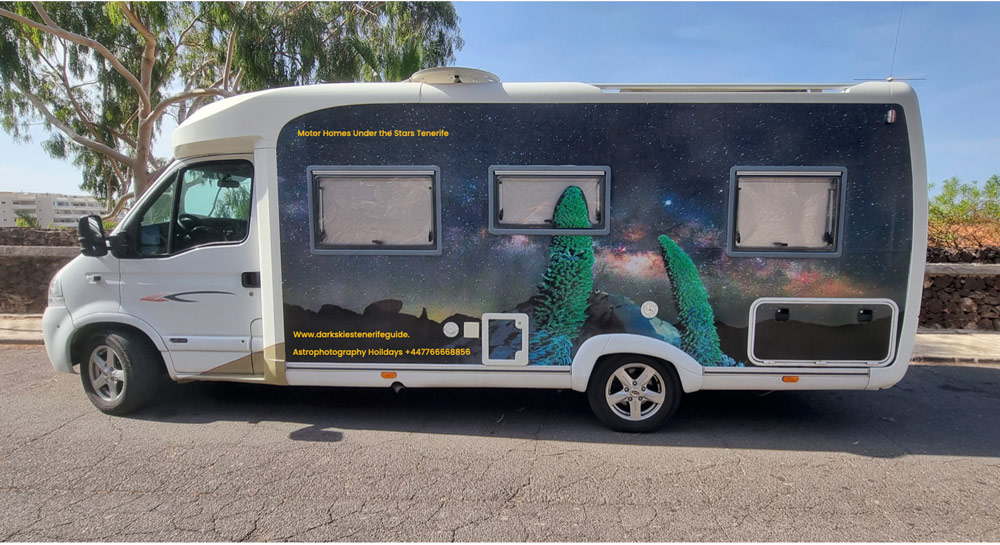
The luxury motorhome is an ideal base for astrophotography in Tenerife – the roads around the island are in good condition and very scenic
So we can use it as a place to relax and get a cup of tea, or even connect laptops to the telescopes in there. It’s a great base for astrophotography. I drive the motorhome, with Peter Louer doing most of the photography tuition, but if people are confident driving it around Tenerife, they can also book it as part of their trip. A motorhome is a great accessory!’
Why Tenerife is the ideal location
We asked Steve to remind us why Tenerife is so well-suited to astrophotography. ‘The Canary Islands, including La Palma and Tenerife, rank as the third-best places in the world to see stars without worrying about light pollution. There are no real trade winds here to disturb the air, plus low humidity and 82% clear skies all year round.
We also get longer astronomical darkness in summer as we are nearer to the equator – about eight hours of dark skies to enjoy. Coming to Tenerife is a great way to photograph the Milky Way. As we are further south, we get to see its core, which isn’t the case in Northern Europe.
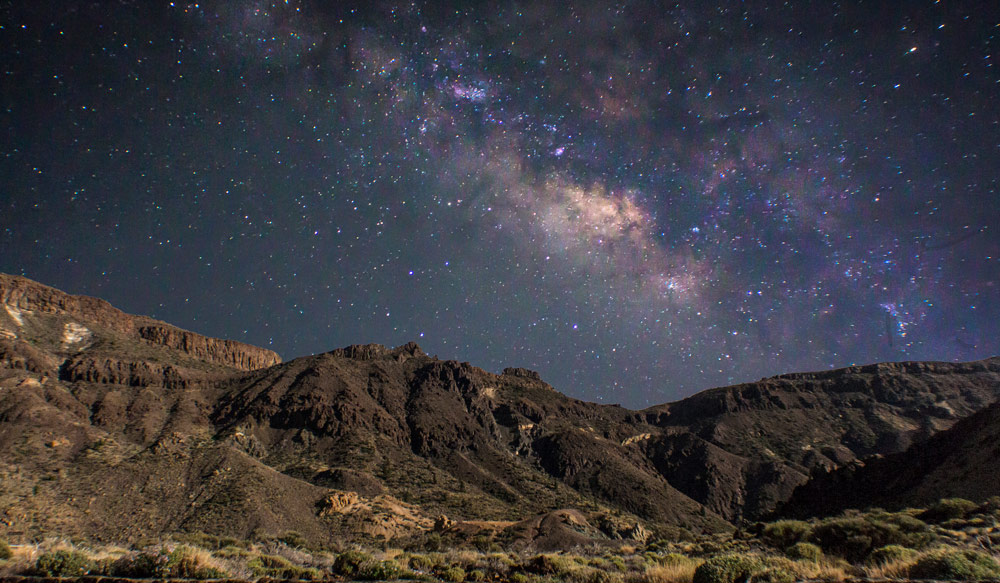
The island is the go-to place for great milky way shots. Credit: Peter Louer
The other great advantage of Tenerife is that it’s cheap and easy to get to from the UK, with regular Easyjet flights to Tenerife South airport – it only takes about four hours.’
So is any time of year particularly good for astrophotography? ‘We can offer courses all year round thanks to the motorhome, but autumn is particularly good, namely September and October,’ Steve advises. ‘The milky way is nice and high and there are lots of deep space objects to check out, including the great cluster in Hercules, the Andromeda galaxy, etc. Jupiter and Saturn also look great in the autumn. You can also lots of fireballs – exceptionally bright meteors – which look really spectacular.’
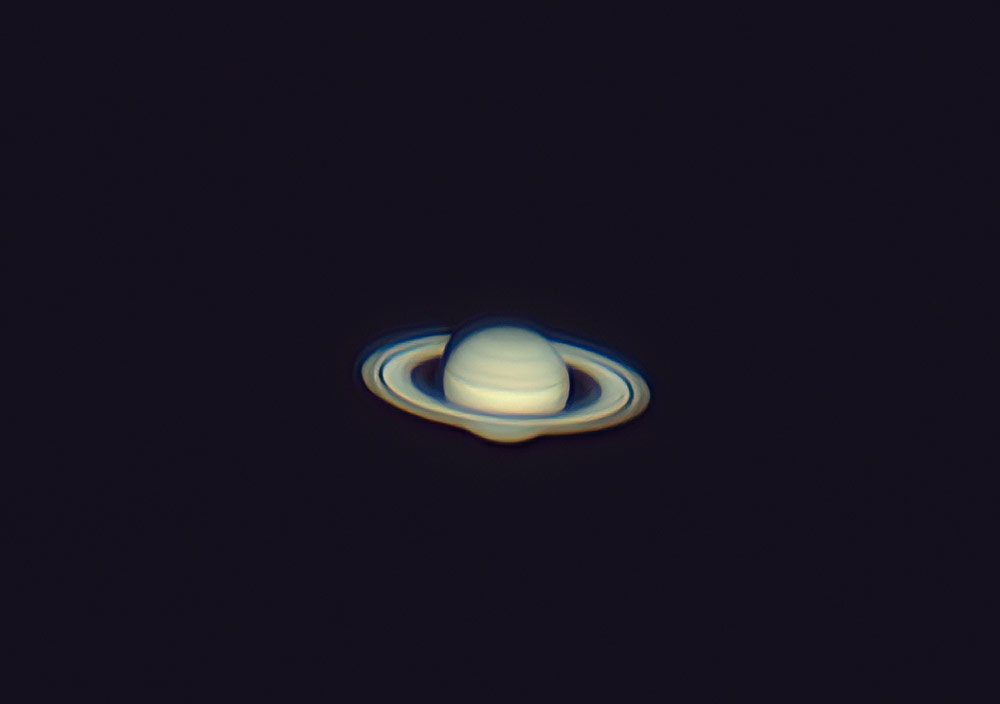
The trips are also a great opportunity to get shots of Jupiter and Saturn. Credit: Peter Louer
Meet the astrophotography tutor
As Steve Phelps mentioned, the principal tutor on the astrophotography courses is Peter Louer, who is also a long-time resident of Tenerife. ‘I’ve been interested in astronomy for 60 years and astrophotography for the last 40,’ Peter explains. ‘I have a strong background in photography, having set up a London studio for commercial work back in 1968. I’ve focused on astrophotography since retiring.’
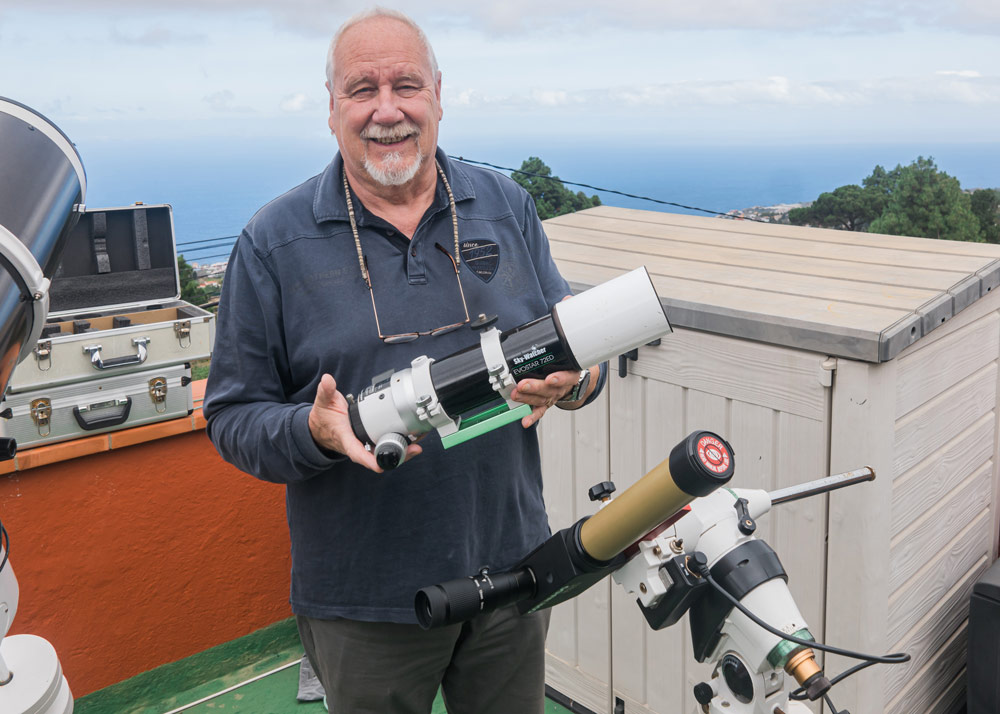
Peter Louer at his home observatory in Tenerife
As Peter re-iterates, the courses are entirely bespoke, depending on the customer’s previous experience and confidence. ‘We start with basic nightscapes, taking advantage of the interesting rock formations in the volcanic area around the famous Mt Teide. People can use their existing camera gear and we can supply tripods – any camera will do so long as it supports longer exposures, eg Bulb mode. You only need a 100 or 200mm lens, but you will need a longer lens for bigger nebulae.’
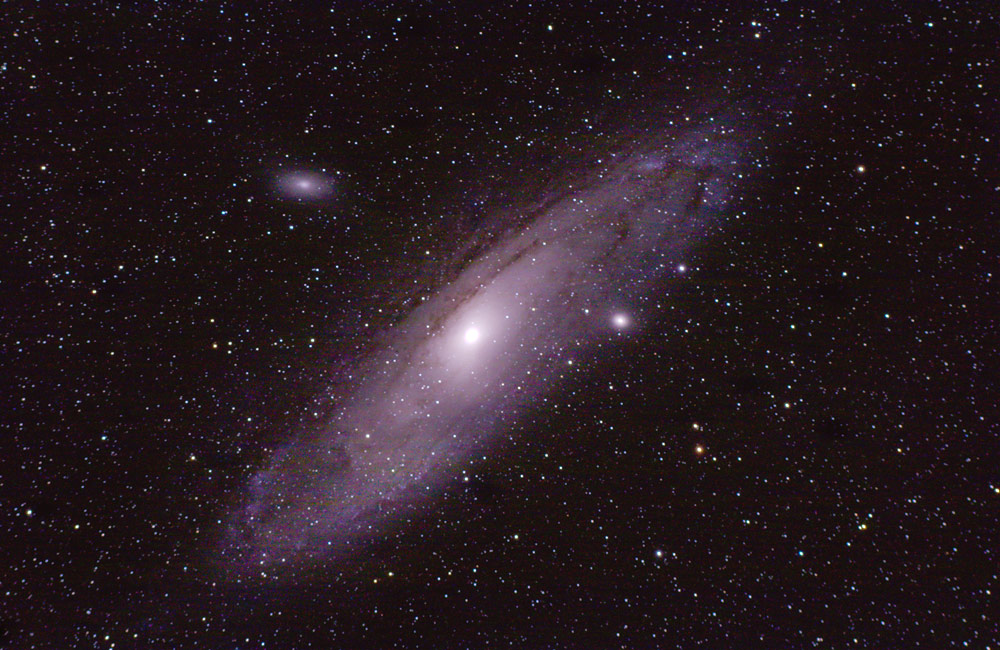
The Andromeda galaxy from Tenerife. Credit: Peter Louer
The other prerequisite is an electronic mount. As Peter explains, these don’t have to expensive, with a complete package costing about £650. A cheaper option is to add one to your own tripod, for about £350. ‘That will handle a large telephoto lens – we try and keep things as simple as possible.’
Peter will start people off on one of his tracking mounts, using their camera equipment. ‘An important part of my job is showing people how to set up a tracking mount. You don’t just plonk it on – it has to be aligned to the axis of earth, pointing due north. They look complicated, but are quite straightforward, and we are there to help.’
Having not done much astrophotography before, we can vouch for Peter’s ability as a teacher, not to mention his kindness and patience. A lot of the manual exposure and manual focussing techniques will be familiar to readers, but it’s great to have him next to you to check everything; he also brings along a powerful torch to provide a bit of extra illumination for interesting rocks, etc, in the foreground.

Our first ‘proper’ attempt at astrophotography came out well, with Peter Louer’s help
‘The next step up from there is doing more deep sky photography, including nebulae and galaxies, taking a sequence of 20 or 30 images and learning how to stack them.’
Master processing for astrophotography
As well as help with hardware, Dark Skies Tenerife Guide puts a lot of emphasis on teaching customers how to process their images properly. ‘With simple nightscapes, it’s a case of making basic adjustments to the image in Adobe Camera Raw, such as overall exposure and colour balance,’ Peter explains.
‘Then we switch to Photoshop and use the quick selection tool to separate the foreground from the star background, adjusting each separately. I mainly use Curves to add contrast, and the Dodge and Burn tools to lighten or darken specific areas as necessary. It’s all about bringing out maximum detail. After the trip, I am available on email to answer questions and have lots of videos I can send people.’
We’re stacked
From here, students learn more about the processing side, including stacking images. ‘Even with 20 or 30 exposures stacked, you still need to retrieve detail and edit the image,’ Peter explains.
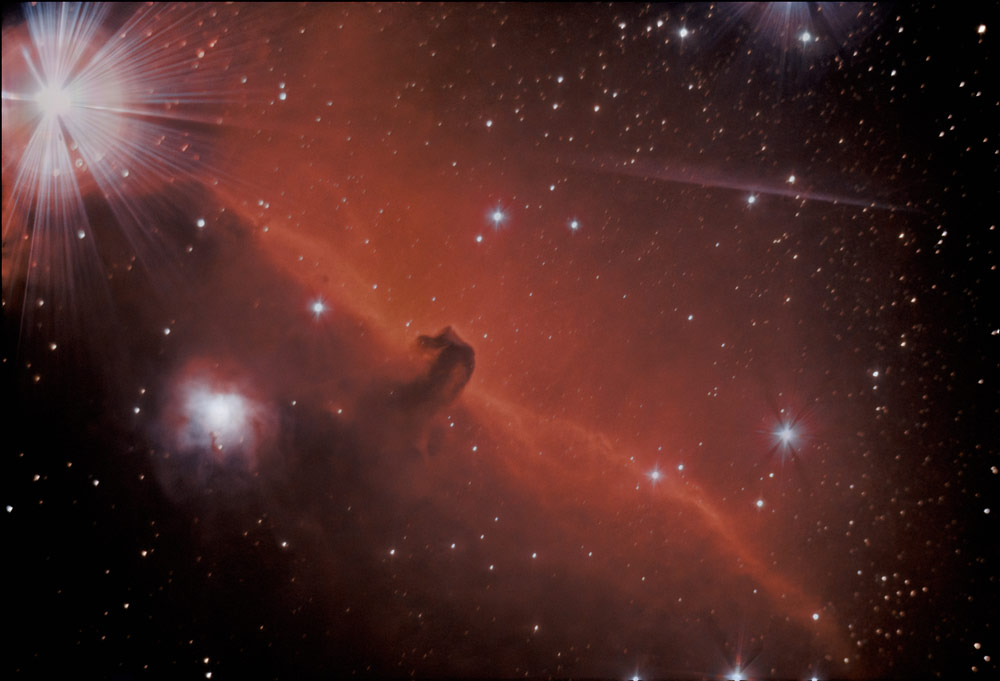
The Horsehead Nebula. Credit: Peter Louer
‘For nebulae, we use special free software called Sequator, which a stacking program. We then use Starnet GUI to separate stars from the main subject, making them less intrusive. Another useful program is AutoStakkert 3, which is used to stack planetary images. Photoshop still does a lot of the heavy lifting however, enabling you to use layer masks to separate parts of the images and focus on them. You will also need to get the Arcsihn Add-ons to install in Photoshop. We can explain all of this in more detail.’
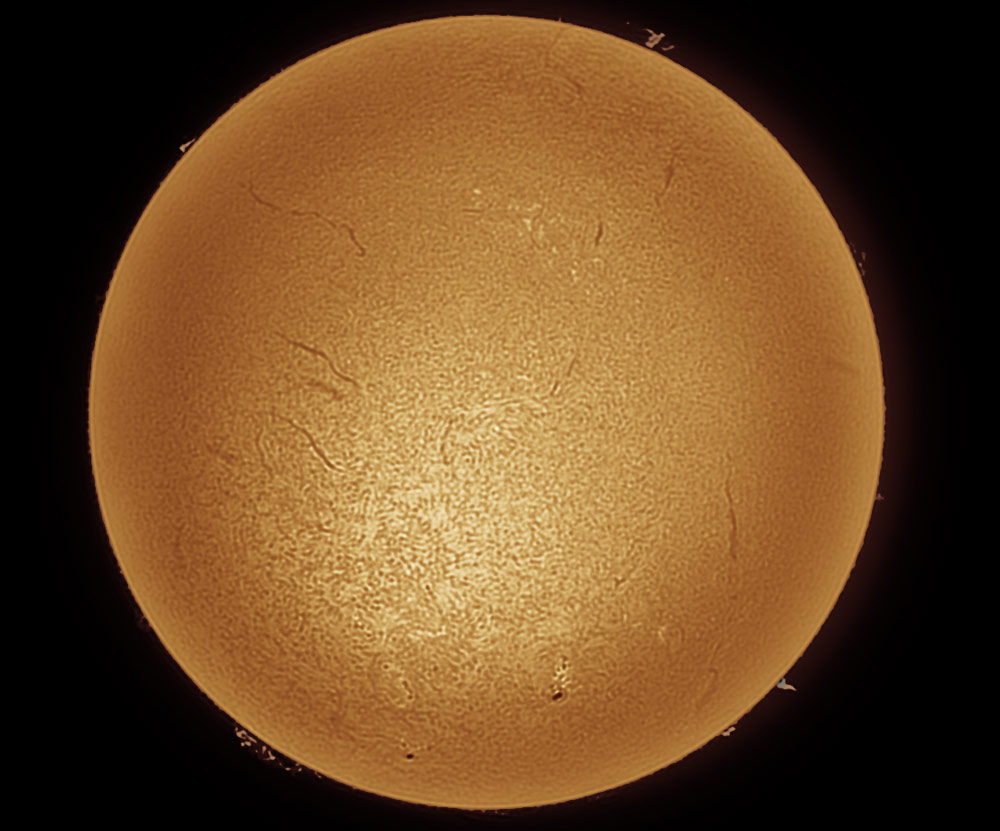
Peter is an expert solar photographer. Credit: Peter Louer
Peter also showed me some spectacular close-ups he’d taken of the sun from Tenerife. ‘With solar images, the golden rule is never to try and look at the sun without the right gear. I use a Coronada PST (personal solar telescope) which has specialist filters to block out the brightness. Another filter lets you record the prominences and details you can’t see in ordinary light – the interesting stuff happening in the sun’s atmosphere,’ in other words.
Another key technique Peter teaches is pulling frames off video. This is needed when shooting the moon and planets, as they are moving – a simple long exposure would just smear everything.
‘So we take a minute-or-so video, which generates about 2000 frames. Software called AstroStart then finds the best frames and stacks them for a final still image. This is then sharpened using another program called RegiStax, which enables a very fine level of adjustment, then we go back into Photoshop to finish everything off. In some ways the photography part is the easiest bit about astrophotography!’
Plenty to enjoy in Tenerife in the day, too
As well as astrophotography, Tenerife is well suited to a range of other genres. The island has a very diverse landscape and climate, with lots of interesting birds to photograph, not to mention the interesting local culture and fabulous food.
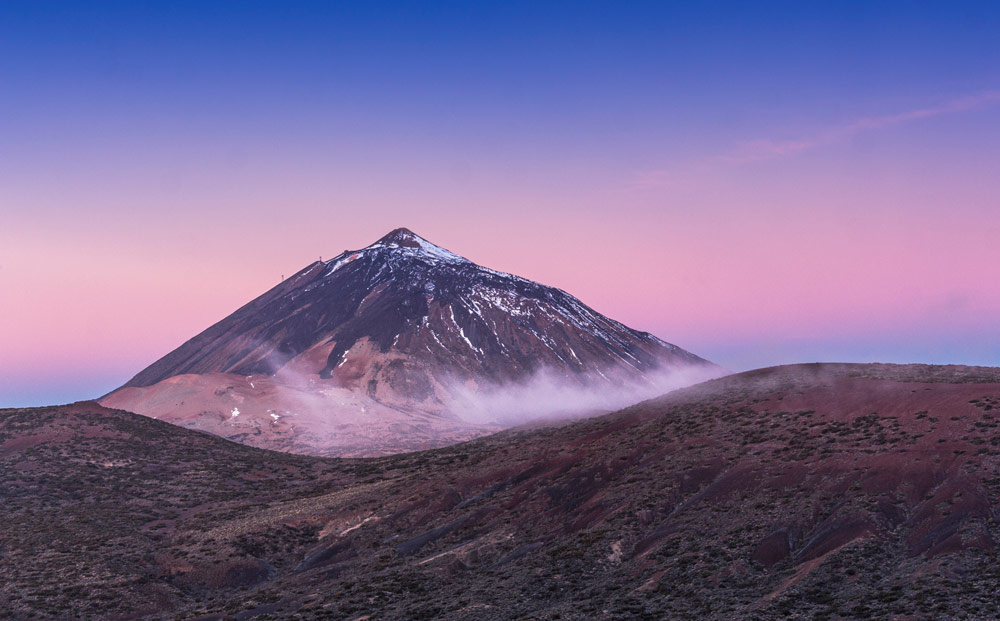
The spectacular Mt Teide – much of the astrophotography takes place in the high-altitude area below the volcano. Credit: Peter Louer
The roads are in very good condition, though you need to take care when negotiating the very tight bends that characterise the roads snaking above the magnificent Masca Valley. It was huge fun though and I can’t wait to go back!

The jaw-droppingly spectacular Masca Valley. Credit: Geoff Harris

